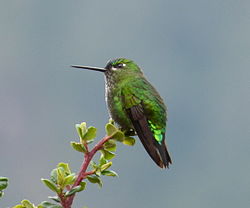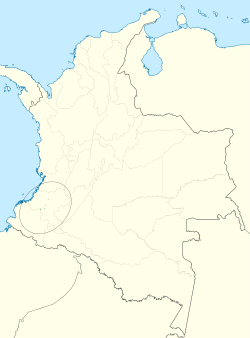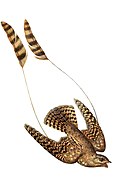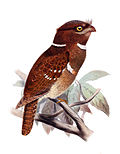| Eriocnemis | |
|---|---|
 | |
| Eriocnemis luciani | |
| Scientific classification | |
| Kingdom: | Animalia |
| Phylum: | Chordata |
| Class: | Aves |
| Clade: | Strisores |
| Order: | Apodiformes |
| Family: | Trochilidae |
| Tribe: | Heliantheini |
| Genus: | Eriocnemis Reichenbach, 1849 |
| Type species | |
| Eriopus simplex [1] Gould, 1849 | |
| Species | |
see text. | |
Eriocnemis is a genus of hummingbirds, which - together with the species in the genus Haplophaedia - are known as pufflegs. They occur in humid forest, woodland and shrub at elevations of 1000 to 4800 meters above sea level in the Andes of Argentina, Bolivia, Peru, Ecuador, Colombia, and Venezuela. The males have a colourful green, coppery or blue plumage, and the females are generally somewhat duller. The most striking feature of both sexes in the genus Eriocnemis are their dense snow-white leg-puffs which consist of feather tufts that resemble woolly panties. One species, the black-thighed puffleg - is characterized by black coloured leg-puffs. Most have a contrasting blue, purple or coppery-red vent, but this is green in the black-thighed and emerald-bellied puffleg. Further common features of all species are the straight black bill and the slightly to deeply forked tail. The genus name was coined by the German naturalist Ludwig Reichenbach who called them Snowy panties.
Contents
While most members of this genus remain fairly common, three species (colorful puffleg, black-breasted puffleg and gorgeted puffleg) are critically endangered and one (the turquoise-throated puffleg) is possibly extinct.

























